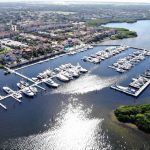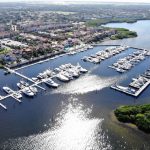 Marine Surveyor 33425 – How to Interpret a Marine Surveyor’s Findings on Hull Blistering and Delamination?
Marine Surveyor 33425 – How to Interpret a Marine Surveyor’s Findings on Hull Blistering and Delamination?
When it comes to owning a boat, maintenance is key to ensuring its longevity and safety out on the water. As a boat owner, one of the most important investments you can make is hiring a qualified marine surveyor to inspect your vessel regularly. In the 33425 area, Suncoast Marine Surveying is the go-to company for comprehensive marine surveys.
One common issue that marine surveyors often come across during inspections is hull blistering and delamination. These problems can affect the structural integrity of the boat and compromise its seaworthiness. So, how can you interpret a marine surveyor’s findings on hull blistering and delamination?
First and foremost, it’s important to understand what hull blistering and delamination are. Hull blistering occurs when small bumps or bubbles form on the surface of the boat’s hull due to trapped moisture or air. Delamination, on the other hand, refers to the separation of layers within the hull, which can weaken the overall structure of the vessel.
During a survey, a marine surveyor from Suncoast Marine Surveying will carefully inspect the hull of the boat for any signs of blistering or delamination. They will use various tools and techniques to assess the extent of the damage and determine whether repairs are necessary.
As a boat owner, it’s crucial to pay attention to a marine surveyor’s findings on hull blistering and delamination. If left untreated, these issues can worsen over time and potentially lead to costly repairs down the line. By addressing them promptly, you can prevent further damage and ensure the safety of your vessel.
When interpreting a marine surveyor’s report on hull blistering and delamination, be sure to ask for clarification on any technical terms or jargon used. A qualified marine surveyor from Suncoast Marine Surveying will be happy to explain their findings in detail and answer any questions you may have.
In addition, it’s essential to follow any recommendations provided by the marine surveyor for addressing hull blistering and delamination. This may involve hiring a professional boat repair technician to fix the issues or taking preventive measures to avoid future damage.
By working closely with a reputable marine surveyor like Suncoast Marine Surveying in the 33425 area, you can stay informed about the condition of your boat and take proactive steps to maintain its integrity. Remember, regular inspections and maintenance are key to preserving the value and performance of your vessel for years to come.
In conclusion, if you’re concerned about hull blistering and delamination on your boat, don’t hesitate to contact a qualified marine surveyor for a thorough inspection. With their expertise and experience, they can provide valuable insights into the condition of your vessel and recommend appropriate solutions. Trust Suncoast Marine Surveying in 33425 to keep your boat in top shape and ready for your next nautical adventure.r



 When it comes to owning a boat, ensuring its safety and maintenance is crucial. This is where a marine surveyor comes in. If you are located in the 33425 area, Suncoast Marine Surveying is the go-to company for all your marine surveying needs.
When it comes to owning a boat, ensuring its safety and maintenance is crucial. This is where a marine surveyor comes in. If you are located in the 33425 area, Suncoast Marine Surveying is the go-to company for all your marine surveying needs. When purchasing a boat, it is crucial to have a thorough marine survey conducted to ensure the vessel is in good condition and free from any major issues.
When purchasing a boat, it is crucial to have a thorough marine survey conducted to ensure the vessel is in good condition and free from any major issues.  As an owner or potential buyer of a boat, it is crucial to understand the condition of the vessel you are interested in. One way to gain this insight is by hiring a
As an owner or potential buyer of a boat, it is crucial to understand the condition of the vessel you are interested in. One way to gain this insight is by hiring a